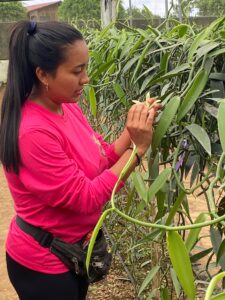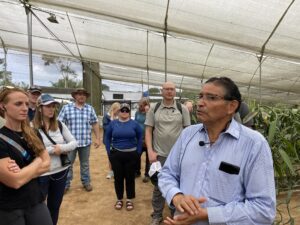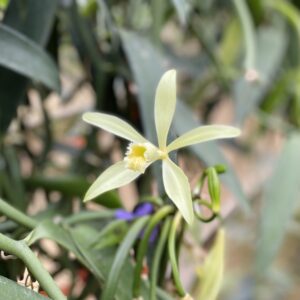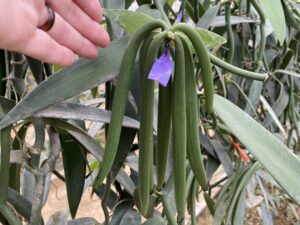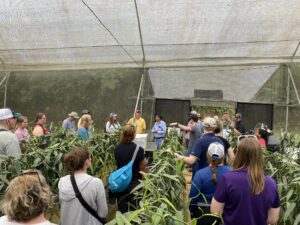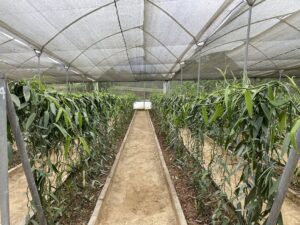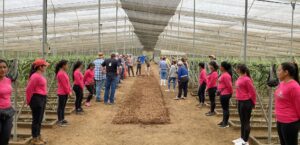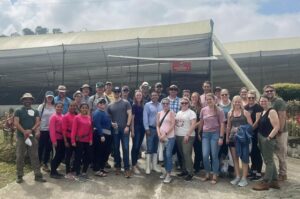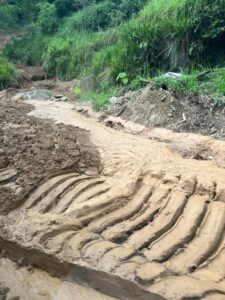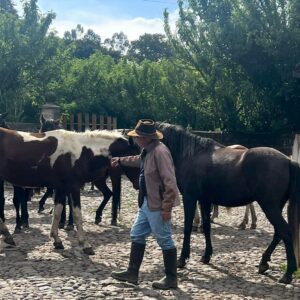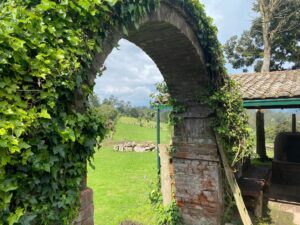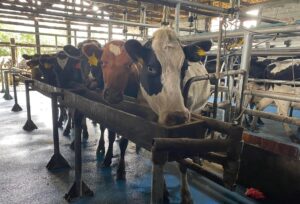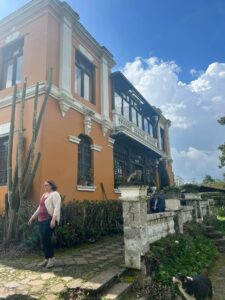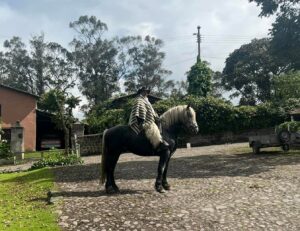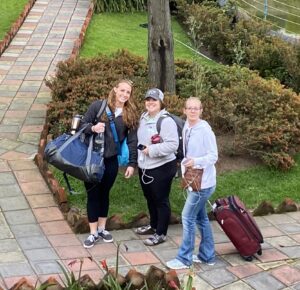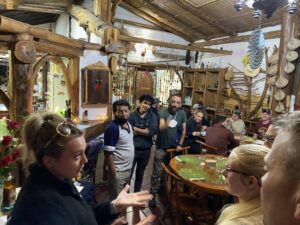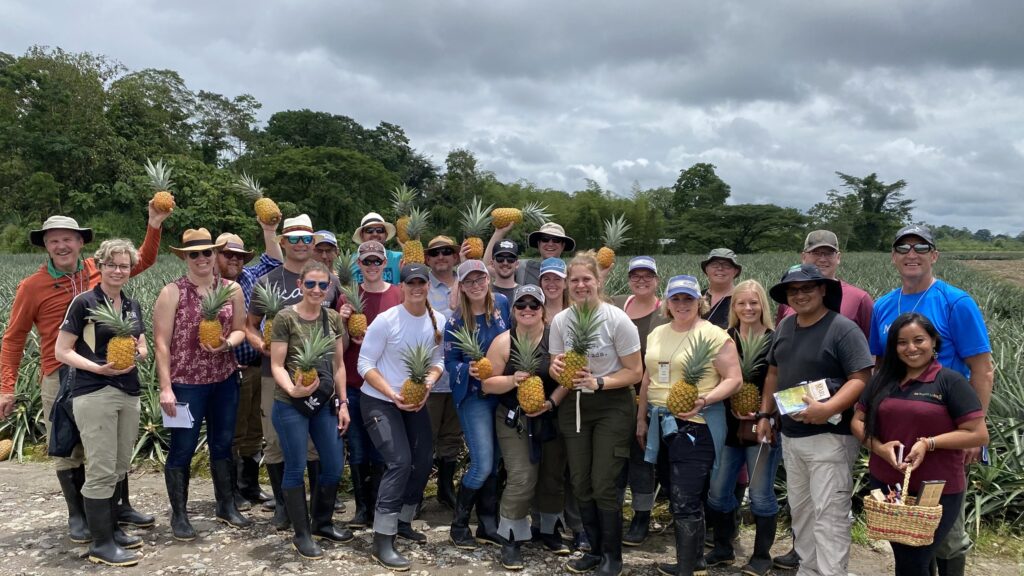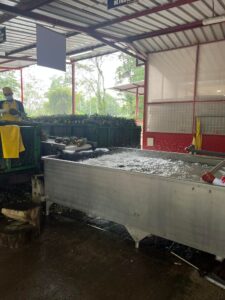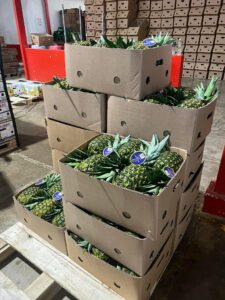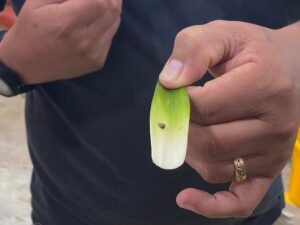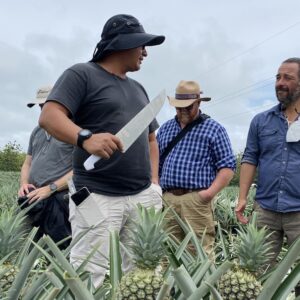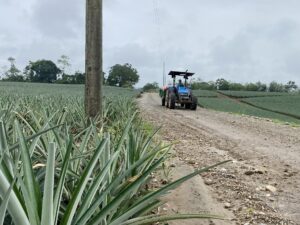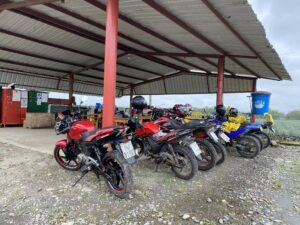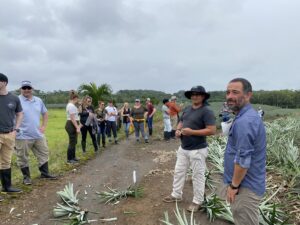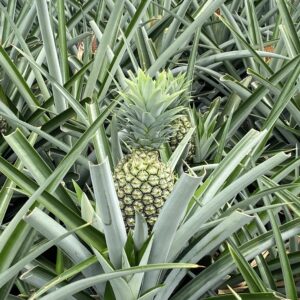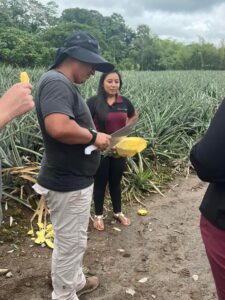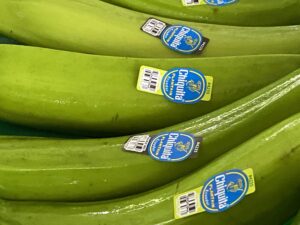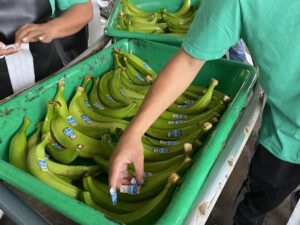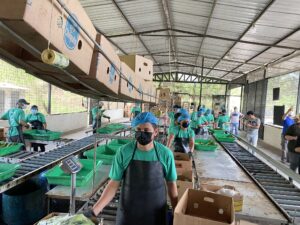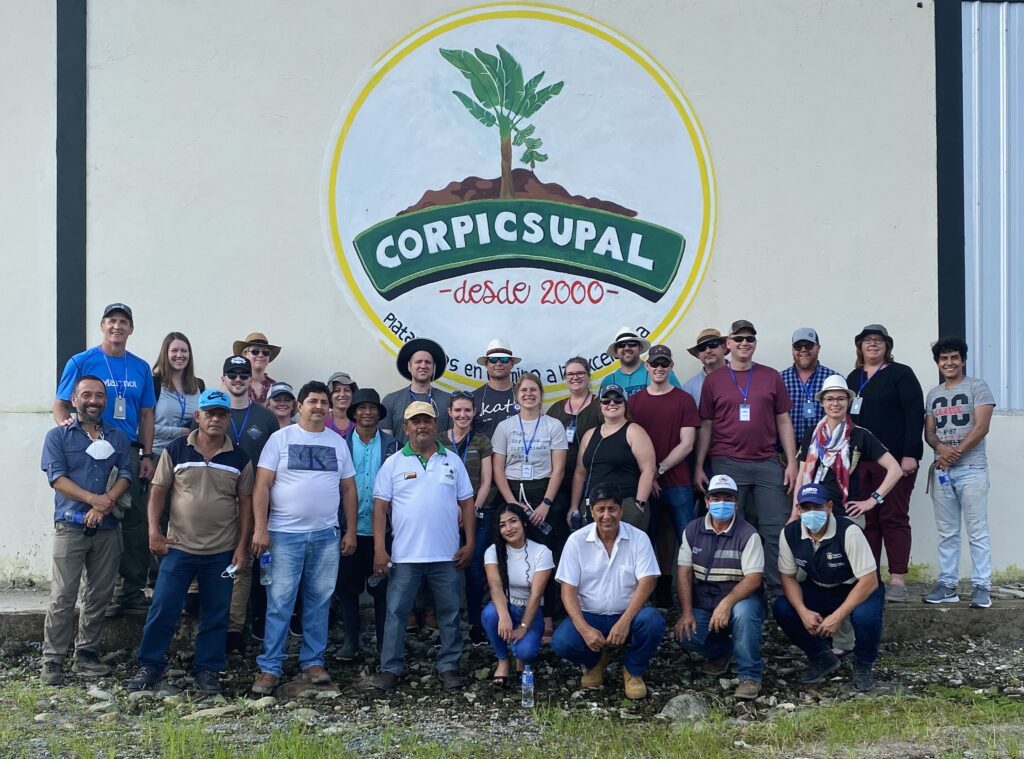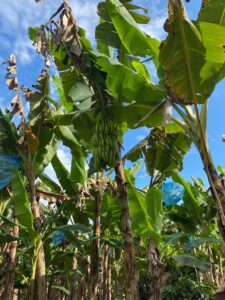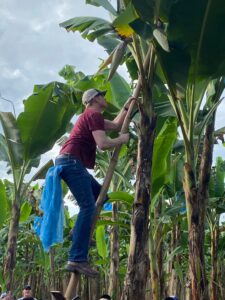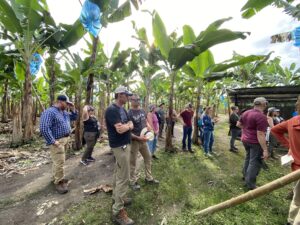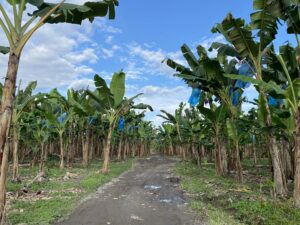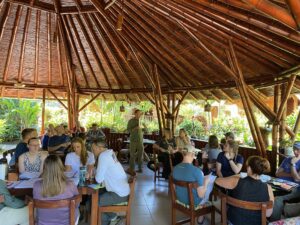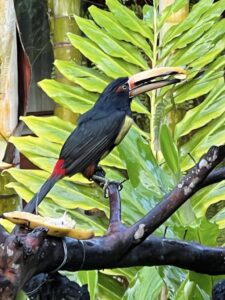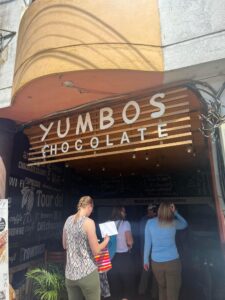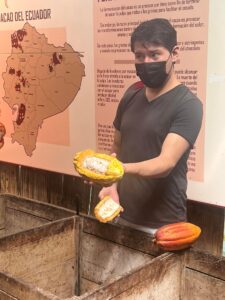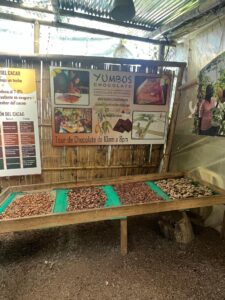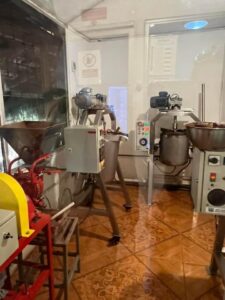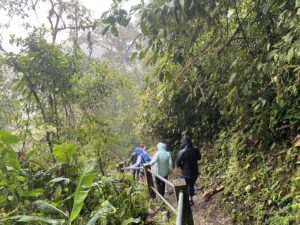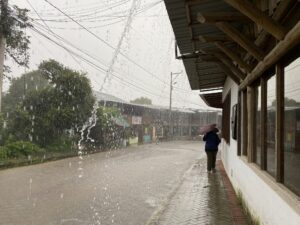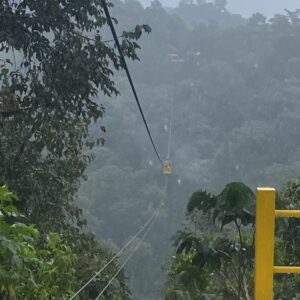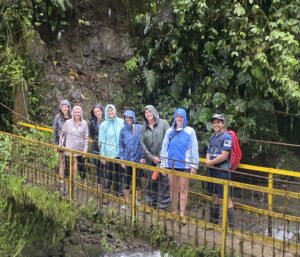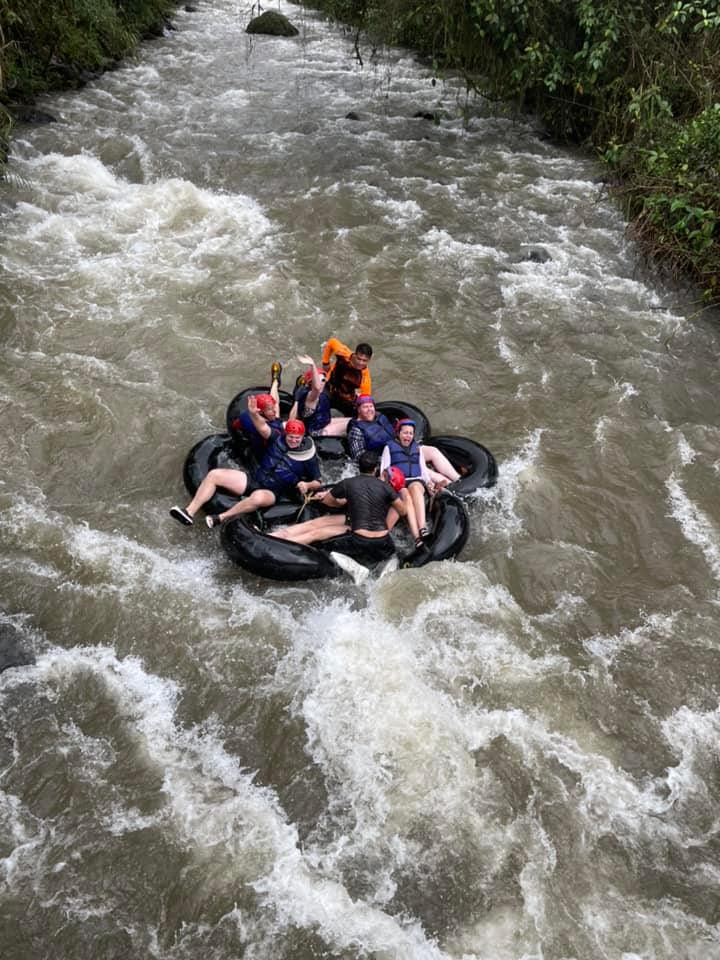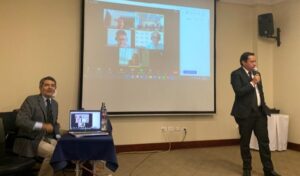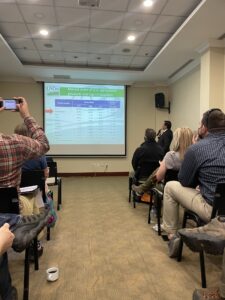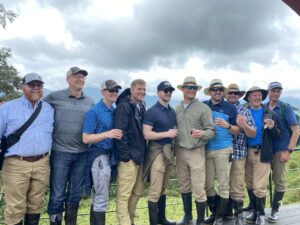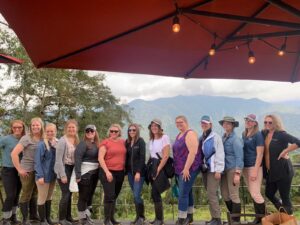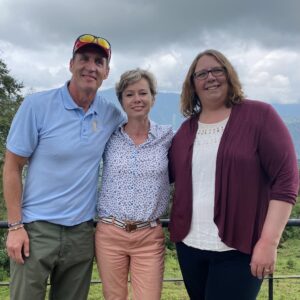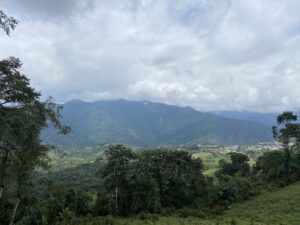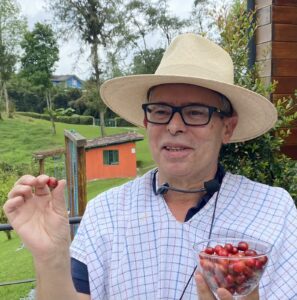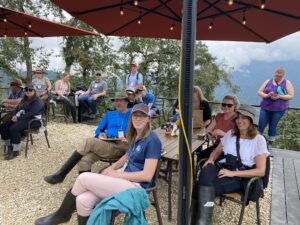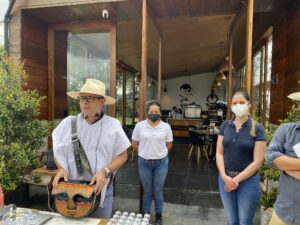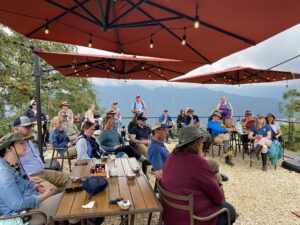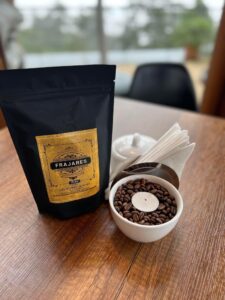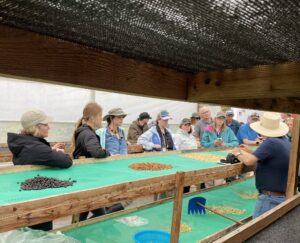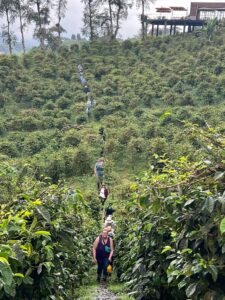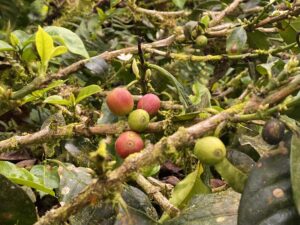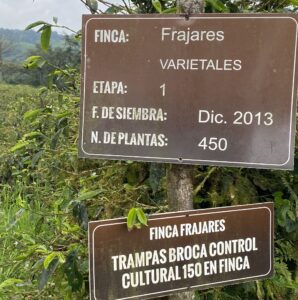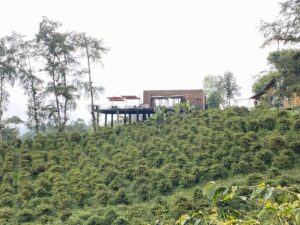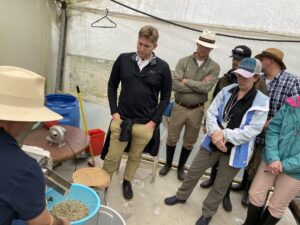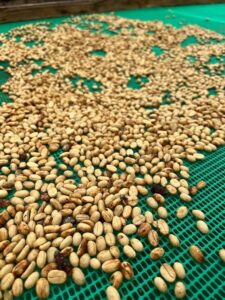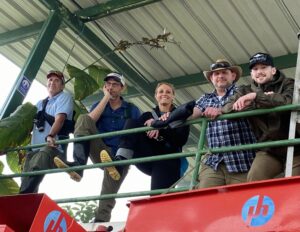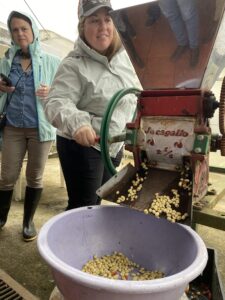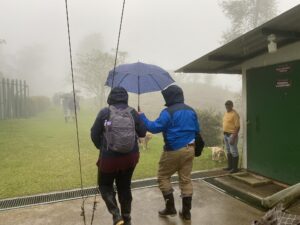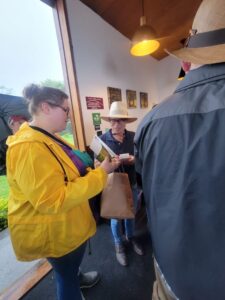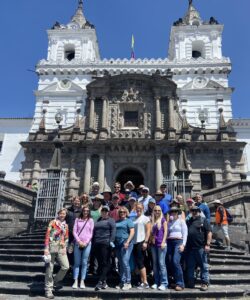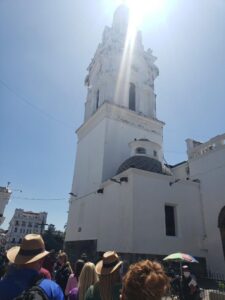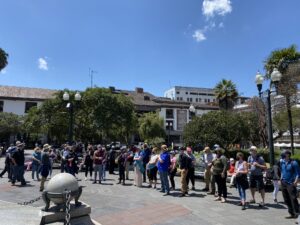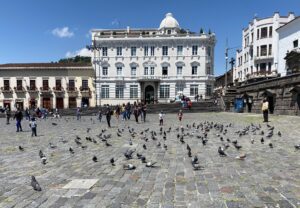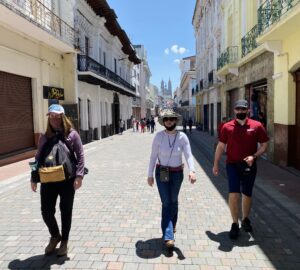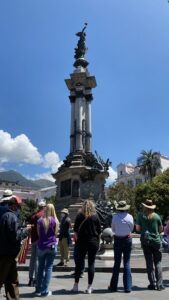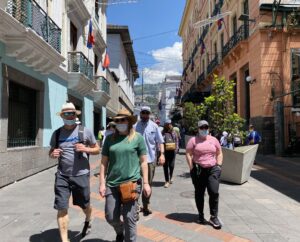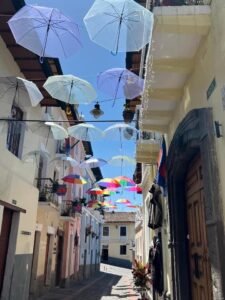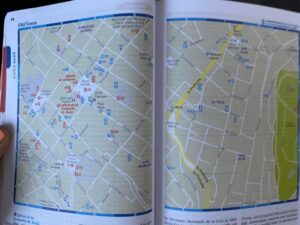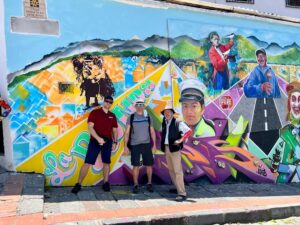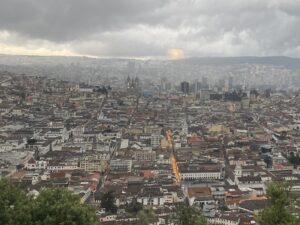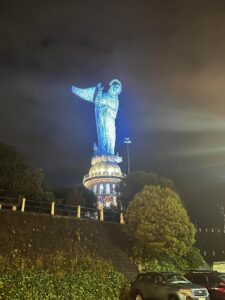Vanilla, horses, dairy, and final reflections
MARL Class XI started its last morning in Ecuador with COVID-19 testing at the hotel in tropical Santo Domingo dos Colorados, before departing for the nearby Vainuz vanilla farm. A negative result is currently required for returning trips to the U.S.. Fortunately, all received a negative result later that day.
Founder/owner Dr. Eduardo Uzcategui, Ph.D. has spent time in the U.S. for his doctorate degree in Animal Science, then worked as Dean of the school of agriculture at the University of San Francisco in Quito. Has worked on/owned this vanilla farm for 23 years. The entire operation started with one vanilla plant, now spread throughout 7 greenhouses and 24 employees. They now produce 1 ton of vanilla of a Tahitian variety annually.
We first viewed the pollination greenhouse. Only women work in this greenhouse as it is a tedious task done by hand (small hands work well) and is done daily. Up to 2,500 hand pollinated plants per day per employee. Harvest will take place 9 months after pollination and flowering.
We then viewed a 1,000 sq meter greenhouse which models what one person could take care of on their own. They use this as an educational area to teach people how they could do this at their farm. Vanilla is not commonly grown in Ecuador, and Dr. Uzcategui is passionate about teaching vanilla farming to others.
The last greenhouse we walked through we were shown how the fertilizer is prepared. Dr. Uzcategui also raises quail, and uses their eggshells in the fertilizer. Finally, special vanilla products were offered for sale. The friendly welcome of Dr. Eduardo Uzcategui and his staff will not soon be forgotten.
On our way from the province of Santo Domingo dos Tsachilas to the province of Pichincha for our next tour, we were delayed about 2 hours due to a mud slide that had wiped out part of the E20 highway. We finally arrived at the Hacienda la Alegria in Aloag; a working dairy- and horse farm since 1910. Since 20 years, it has also specialized in tourism. The beautiful historical colonial Spanish style hacienda offers lodging, meals, horseback riding trips in the area, including to the famous Cotopaxi National Park; the volcano in its view. Owner Gabriel Espinosa welcomed us with a warm cooked lunch, and a brief overview of the history of his family dairy farm.
Cows have been milked at Hacienda la Alegria over 90 years. Gabriel is a prominent leader in the dairy industry, but has also broadened his operation to agro-tourism with an emphasis on horseback riding. Hacienda la Alegria owns 90 horses, and is known for its breeding. Approx. 35 animals serve for horseback riding. The dairy cows of the hacienda graze year round. Gabriel shared his desire to become certified organic soon. The farm renews its pastures every 2-5 years. Chicken manure is used in addition as fertilizer.
Espinosa has served as the president of the Ecuadorian cattle- and dairy association, representing 6,000 farmers throughout 6 provinces. The association works with the state to get milk to children in the schools, and promote dairy consumption. Due to the delay caused by the landslide, our visit to the hacienda was cut much shorter than planned. For more info about this agro-tourism destination, we can refer to its website: http://haciendalaalegria.com/web/, or its captivating video on YouTube: https://youtu.be/c2F_gklvstY.
We said our goodbyes and shared our gratitude with Gabriel Espinosa and family, and resumed our travels back to the airport in Quito. An Eco Lodge near the airport provided us with hot showers and a chance to change clothes for the return flight, as well as a place to share final reflections. Educators Toby Spanier and Christy Kallevig facilitated a brief session where we could share stories, and more.
During the farewell dinner, we said goodbye to the beautiful country and people of Ecuador, and thanked our tourguide Ivan, his assistant Mateo, and incredible bus driver Fernando. We boarded our 11:30pm flight back to the states. Tired, but more importantly grateful for this unique opportunity to expand our horizons as leaders.
Submitted by Seminar Management Team Green: Sarah McConnell, Joel Dorn, Haley Ammann-Ekstrom and Jessica Miller. Edited by Olga Brouwer.
